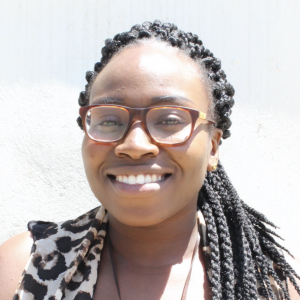A normal day at Eshiamboko Primary School starts as early as 6:30am when the first students arrive. They're supposed to be there by 7am for morning study hall. After, they work together to complete the cleaning chores on their roster. There are occasional tea breaks until an hour's lunch break before afternoon classes. The final hour of the school day is spent split up between sports and different interest clubs.
There are currently 595 students enrolled who are taught by 17 teachers. The school employs four support staff to make sure daily activities are running smoothly.
Water
The school doesn't have a reliable source of water. Students here are often absent because of waterborne diseases.
It has a 4,500-liter plastic tank that's reserved for the kitchen. Students are asked to carry water from home to school every single morning. Since students are coming from different places, there's no way to point out one water source and ascertain the quality of their water.
When this water's used up, students have to go back out in search of more. Teachers ask that they walk a little over one kilometer to get clean water from a protected spring. This is a tiring task, not to mention the water can be contaminated after the long walk with uncovered containers.
Sanitation
"I have worked in this school for over 10 years now, and I have seen the different headteachers usually transferred in and out of this school strive to try and achieve some level of hygiene, with some success," Mama Sephina, the school cook, told us.
"This has been a challenge since the school is on rocky grounds (so it's hard to build new pit latrines), and the students suffer most since they have to bring water from home. This limits us in terms of cleanliness, as we are forced to use as little water as possible in order to avoid burdening the pupils. We hardly wash our hands here, so typhoid has been a nuisance we have been living with for a long time."
Here's what we're going to do about it:
Training
Training will be held for two days. The facilitator will use PHAST (participatory hygiene and sanitation transformation), ABCD (asset-based community development), CTC (child to child), lectures, group discussions, and handouts to teach health topics and ways to promote good practices within the school. The CTC method will prepare students to lead other students into healthy habits, as well as kickstart a CTC club for the school.
Hand-Washing Stations
This CTC club will oversee the new facilities, such as hand-washing stations, and make sure they are kept clean and in working condition. The two hand-washing stations will be delivered to the school, and the club will fill them with water on a daily basis and make sure there is always a cleaning agent such as soap or ash.
VIP Latrines
Two triple-door latrines will be constructed with local materials that the school will help gather. And with a new source of water on school grounds, students and staff should have enough to keep these new latrines clean.
Rainwater Catchment Tank
A 50,000-liter rainwater catchment tank will help alleviate the water crisis at this school. The school will also help gather the needed materials such as sand, rocks, and water from the spring for mixing cement. Once finished, this tank can begin catching rainfall that will be used by the school’s students and staff.
We and the school strongly believe that with this assistance, standards will significantly improve. These higher standards will translate to better academic performance!
This project is a part of our shared program with Western Water And Sanitation Forum (WEWASAFO). Our team is pleased to provide the reports for this project (formatted and edited for readability) thanks to the hard work of our friends in Kenya.

 Rainwater Catchment
Rainwater Catchment
 Rehabilitation Project
Rehabilitation Project



































